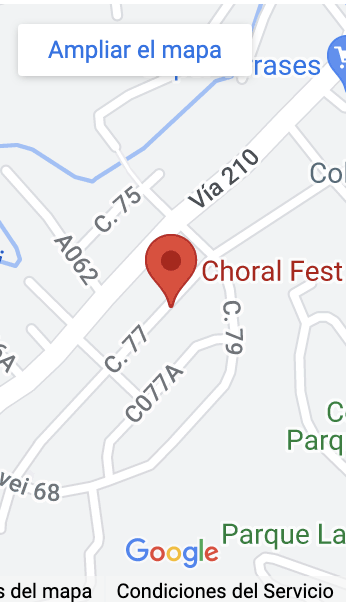Time Signatures and Their Impact on Choral Music
Choral music has the unique ability to move us emotionally and spiritually, creating a sense of unity and expression through vocal harmonies. One of the critical elements that contribute to the beauty and complexity of choral music is the time signature. Understanding time signatures and their impact on choral arrangements can enhance both the performance and appreciation of this art form.
What Are Time Signatures?
Time signatures, also known as meter signatures, are notational devices used in Western musical notation to specify how many beats are contained in each measure and which note value is equivalent to a beat. The time signature appears at the beginning of a piece of music, right after the clef and key signature.
Time signatures are written as a fraction, with the top number indicating the number of beats in a measure and the bottom number representing the note value that gets the beat. For example, a 4/4 time signature means there are four beats in a measure, and the quarter note gets one beat.
Common Time Signatures in Choral Music
4/4 Time Signature
The 4/4 time signature, often referred to as «common time,» is perhaps the most frequently used time signature in choral music. In 4/4 time, there are four beats per measure, and the quarter note is the beat unit. Many well-known choral works, including Handel’s «Hallelujah Chorus,» are written in 4/4 time, providing a steady and familiar rhythm that is easy for choirs to follow.
Example: Handel’s «Hallelujah Chorus» from Messiah
3/4 Time Signature
The 3/4 time signature, known as «waltz time,» has three beats per measure, with the quarter note receiving the beat. This time signature creates a graceful and flowing rhythm, often used in choral music to evoke a sense of dance or movement. Works such as Brahms’ «Wie lieblich sind deine Wohnungen» from Ein deutsches Requiem utilize the 3/4 time signature to great effect.
Example: Brahms’ «Wie lieblich sind deine Wohnungen» from Ein deutsches Requiem
6/8 Time Signature
The 6/8 time signature is a compound meter, meaning each beat can be divided into three smaller units. In 6/8 time, there are six beats per measure, with the eighth note receiving the beat. This time signature is often used to create a lilting, dance-like feel in choral music. One famous example is Mozart’s «Ave Verum Corpus,» which employs the 6/8 time signature to create a serene and flowing texture.
Example: Mozart’s «Ave Verum Corpus»
The Impact of Time Signatures on Choral Music
Rhythmic Structure
Time signatures play a crucial role in establishing the rhythmic structure of a choral piece. The choice of time signature influences the overall feel and pacing of the music, guiding the choir’s interpretation and performance. For instance, a 4/4 time signature provides a stable and predictable rhythm, while a 7/8 time signature might introduce complexity and irregularity, challenging the choir to maintain cohesion.
Expressive Potential
Time signatures also impact the expressive potential of choral music. Different time signatures can evoke various emotional responses and moods. For example, a 2/2 time signature, known as «cut time,» can create a brisk and energetic feel, suitable for lively and spirited pieces. Conversely, a 5/4 time signature can impart a sense of tension and unpredictability, adding depth and nuance to the music.
Interpretation and Conducting
Conductors rely on time signatures to communicate the intended tempo and rhythmic structure to the choir. The conductor’s gestures and patterns are often based on the time signature, ensuring that the choir maintains a unified performance. Understanding time signatures helps choristers anticipate changes in rhythm and tempo, allowing them to respond effectively to the conductor’s cues.
Actionable Tips for Choral Directors and Singers
Familiarize Yourself with Various Time Signatures
Both choral directors and singers should take the time to familiarize themselves with different time signatures and their characteristics. Practice sight-reading pieces in various meters to develop a deeper understanding of how time signatures influence rhythm and phrasing.
Use Metronomes and Clapping Exercises
Incorporate metronomes and clapping exercises into rehearsals to reinforce the understanding of time signatures. Clapping the rhythms while using a metronome can help singers internalize the beat and improve their rhythmic accuracy.
Focus on Ensemble Cohesion
Emphasize the importance of ensemble cohesion, especially when performing pieces with complex or irregular time signatures. Encourage singers to listen to each other and watch the conductor closely to maintain a unified and cohesive performance.
Experiment with Interpretation
Encourage experimentation with interpretation and expression based on the time signature. Explore how different time signatures can influence the mood and character of a piece, and use this knowledge to enhance the choir’s performance.
Conclusion
Time signatures are fundamental to the structure and expression of choral music. By understanding and appreciating the impact of time signatures, choral directors and singers can enhance their performances and deepen their connection to the music. Whether it’s the steady pulse of 4/4 time or the flowing grace of 3/4 time, each time signature brings its unique character and influence to choral arrangements, enriching the overall musical experience.
By incorporating the knowledge and tips shared in this blog post, choral enthusiasts can unlock new levels of artistry and cohesiveness in their performances, ultimately bringing the beauty of choral music to life.

